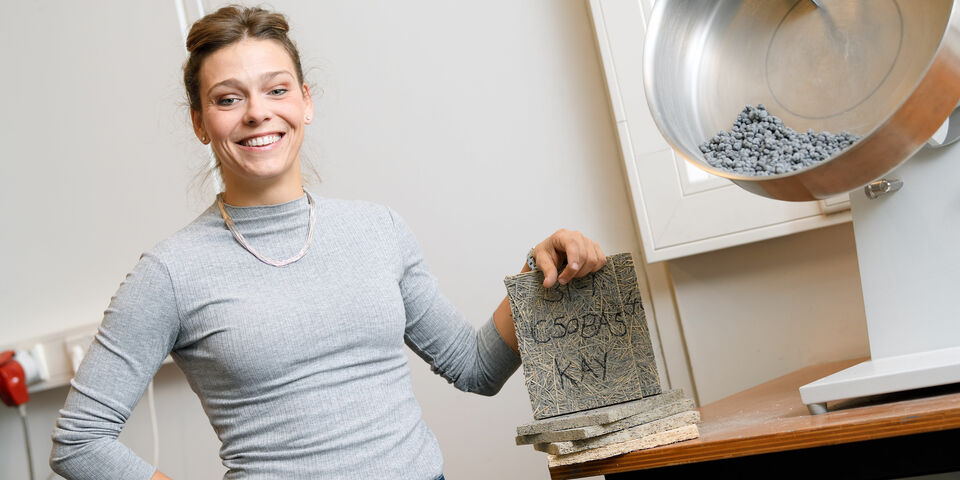Home Stretch | Building material: ash from non-recyclable waste
The ash left over when non-recyclable waste is incinerated contains relatively large amounts of toxic substances, such as heavy metals. The Italian doctoral candidate Veronica Caprai studied the best way to turn this ash into a safe and useful raw material for cement-based applications.
The average Dutch person produces nearly four hundred kilos of non-recyclable waste per year, most of which is sent to ‘Waste-to-Energy’ incineration plants. Here, not only is power produced, but the volume of the waste is reduced by some 90 percent. But this is not the end of the story, tells doctoral candidate Veronica Caprai. “The non-volatile ash left after incineration contains relatively large amounts of heavy metals, which means precautionary measures are needed before it can be disposed of at a landfill site. There's always the risk, you see, that the toxins will be carried by rainwater into the groundwater. To prevent this happening, the ash must be wrapped in plastic.”
This is a shame, believes the Italian building engineer, because this ‘bottom ash’ can be put to good use. “The coarse-grained fraction, with grains bigger than four millimeters, is already being cleaned and used in street paving. Now I have researched how the smaller grains can be treated in a way that makes them safe to use.” In cement, for example. By being held here securely, the ash - including the toxic waste materials - cannot get into the environment. This makes cement a logical candidate for the recycling of bottom ash.
Treatment
So, in the lab on the second floor of Vertigo, Caprai tested three treatment methods designed to turn the ash into a more suitable raw material for cement-based applications. The first entailed making the grains rounder using a planetary ball mill. “This is a covered jar containing loose hard balls that grind the ash particles into smaller grains, agglomerating them into spherical shape. This helps a lot for the application of bottom ash as a building material.”
Next, the ash was treated in an autoclave: a device in which the material is exposed to high pressure (11 bar) and a high temperature (190 degrees Celsius). Caprai says this strengthens the cement matrix and, above all, makes it better able to retain heavy metals. “So they are less likely to be released into the environment.” Finally, this Italian scientist gave the grains a coating of water glass (sodium silicate). “This smooths their surface, encapsulating the heavy metals, and has the added benefit of improving the cement hardening.”
The next step for the doctoral candidate was to test cement in which a small amount of the ingredient mix had been replaced by the treated ash. “If you add up to 5 percent ash, which is permitted by law, you can't measure the difference. This is good, of course, but it doesn't get us very far and it won't persuade manufacturers to start using bottom ash. The point is that the ash always remains relatively porous and the product containing it is thus, in principle, less strong than the original.”
Insulation
This prompted Caprai to look further afield for applications in which strength is less important. You can turn the ash into pellets for use as lightweight material in structures that are not load-bearing, she explains. “Or you can turn them into insulation material: the thermal performances of cement mixtures are highly improved in the presence of bottom ash. In our group, Building Materials, insulation research is also being conducted on mixtures of wood wool and cement. Evidently, you can replace some portion of the cement with ash with no ill effects. Oddly enough, this actually increases the material’s flexural strength.”
Caprai hopes that as a result of her work, ash from Waste-to-Energy plants will be reused more often in building materials. “If we want a sustainable future, we have to apply a circular economy for building materials. It may feel strange to build your home with contaminated materials, but our extensive testing proves it isn't harmful. We know for certain that heavy metals inflict much less damage when they are immobilized in cement than when they go to landfill and seep into the ground water.”


Discussion